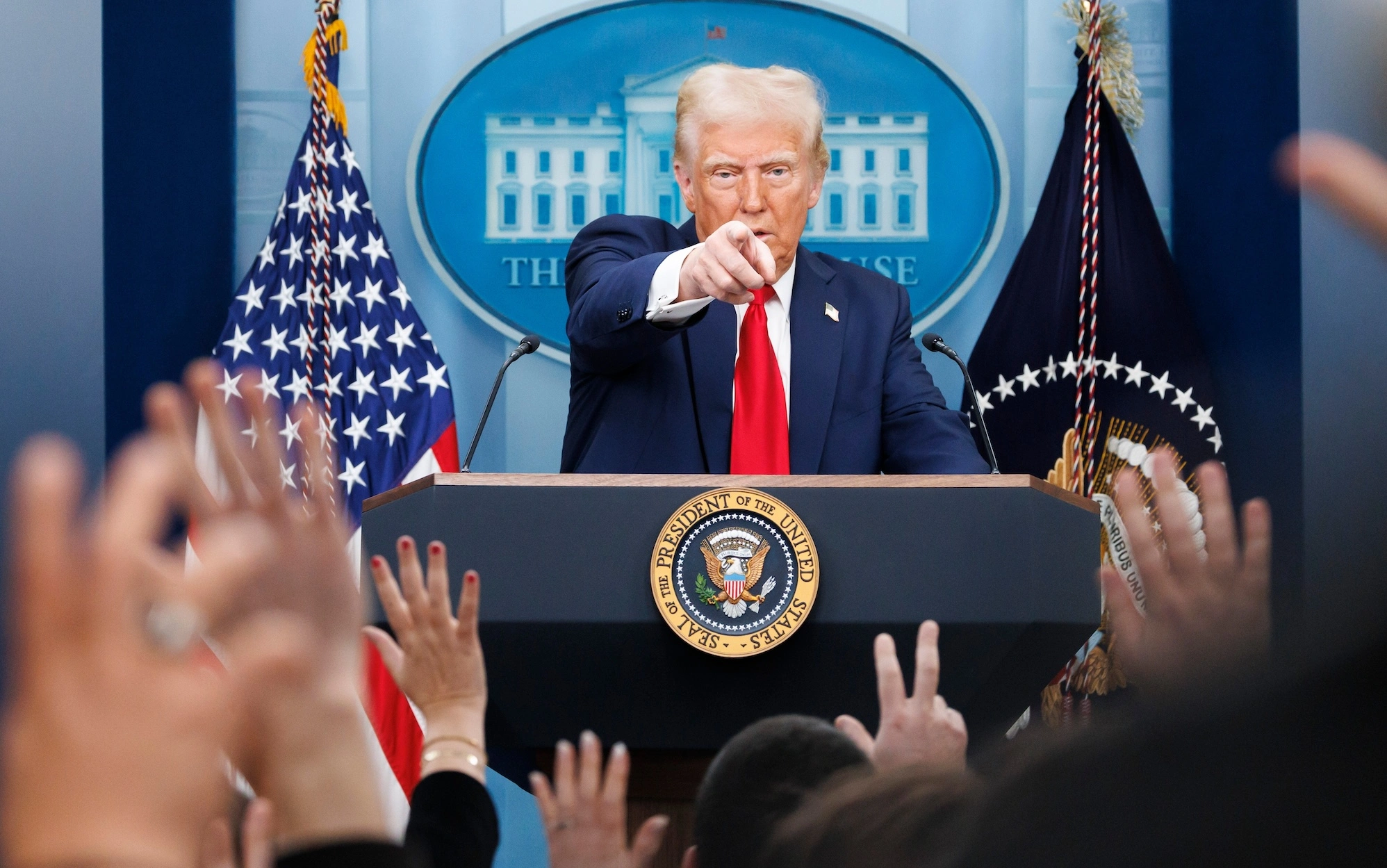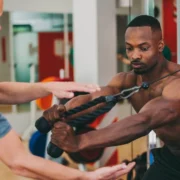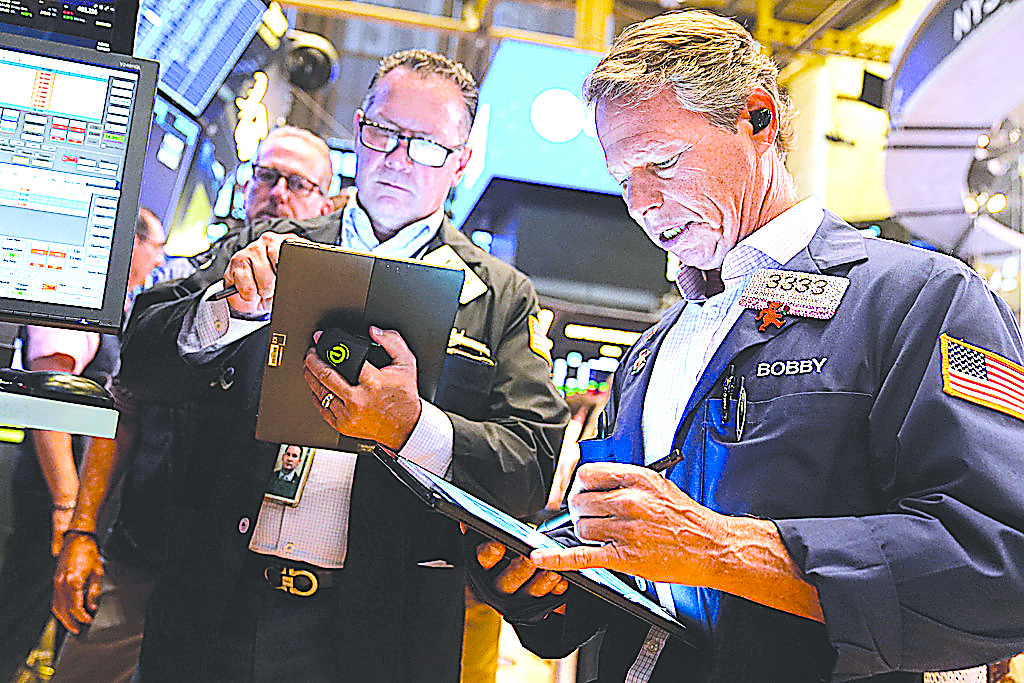0:06 spk_0
Welcome to Yahoo Finance Sports Report, a unique look at the business of sports brought to you by Yahoo Finance and Yahoo Sports. I’m your host, Joe Pompeano, and I’m here to coach you through the financial game. Today we’ve got Yahoo Sports senior college football reporter Ross Dellinger coming on the show to talk about the latest money moves in college sports and Major League Soccer senior vice president of emerging Ventures, Chris Schloschler, to discuss the innovative technology driving MLS. Let’s huddle up and get right into it.We are kicking off this week with PO’s Playbook, where I take a look at some of the biggest headlines in sports that you and your portfolio need to know. First, the Green Bay Packers recently shared their finances from the 2024 to 25 NFL season, and the results revealed another massive year for the NFL. The Packers disclosed that they received $432.6 million in revenue sharing from the NFL for the previous fiscal year, up 8% from 2023-2024 season.That means with each of the NFL’s 32 teams receiving a distribution of $432.6 million the league generated a record $13.8 billion in share revenue last season. Now, the reason we know this information is because the Green Bay Packers are the only publicly owned team in the NFL and are required to share their finances each year. However, the numbers confirm what we already know the NFL is far and away the most financially successful sports league on the planet.Next, according to Josh Carpenter of Sports Business Journal, Liv Golf is increasing its already massive event purses in 2026. Per SBJ sources, Liv’s weekly prize pool for events will go up to $30 million up from the current rate of $25 million per event. Now Liv’s events currently award $20 million to golfers in the league based on their individual stroke play.Pay out $5 million to the top three teams of each event, with $3 million going to the first place team, $1.5 million to the second place team, and $500,000 to the third place team. However, beginning in 2026, the additional $5 million being added to the weekly event purse will be distributed to all 13 of Liv Golf’s teams based on how they finish in each week’s tournament.Last up, Caitlin Clark set another record, but this time it was off the court. Clark’s 2024 Panini WNBA rookie royalty flawless patch autographed one of one rookie card, was sold for a whopping $660,000 at last week’s Fanatics Collect July premiere auction. The $660,000 price tag easily broke the record for the.Most expensive women’s sports car in history, which was previously Caitlyn Clark’s 2024 Panini Prism WMBA Signatures Gold vinyl Prism rookie autograph one of one car that sold for $366,000 this past March through Golden, and according to Card Ladder, there have now been 10 Caitlyn Clark cards sold for $100,000 or more.In addition to Caitlin Clark’s booming collectibles market, the business of college sports is also heating up with more money flowing into college football than ever before. Here to discuss it all is Yahoo Sports senior college football reporter Ross Dellinger. Ross, thank you so much for joining the show today. I want to quickly hit on a topic that has been everywhere over the lastlast week or two, and that is President Donald Trump’s executive order on college sports. And mostly what I’ve been reading, at least the headlines have been saying that he is going to place a limit on earning NIL earning power. Can you just explain just briefly what this executive order actually entails and how it will be implemented?
3:20 spk_1
Yeah, you know, I’d like to, uh, probably break the executive order into two parts. Um, the first is the preamble, um, you know, the executive order is about 5 pages, and the preamble is about 2 pages, and it’s kind of this, the introduction, and it just kind of lays out really where he like is on a lot of the issues and pretty clearly, he is in the ballpark um of siding with the NCAA and the conferences, Donald Trump onUm, on the college athletic landscape, um, he uses words like the, uh, landscape and the environment is sort of rudderless and that he disagrees with a lot of the court rulings that have, um, kind of crippled the NCA’s rules and amateur amateurism rules. And so that gives an idea of like where he is and and what the next part of the executive order is, which isDirectives from the president to his cabinet members like the Secretary of Labor, the Secretary of Education, the Attorney General, um, to sort of make it it’s, it’s like directing those people to make policy around all these concepts of college athletics. Um, so I think I’ll hit on a few big parts of that. Um, he directs the National Labor Relations Board, for instance.Uh, to basically deem athletes as students and not employees, right? So, um, that’s something that the NCA and the conferences have won and pushed for, for, for a while. Uh, number 2, he directs, um, certain cabinet members, including the Attorney General, to create, create policy that sort of protects the NCAA and the conferences, uh, to enforce their rules, which is sort of a limited liability, anti-trust sort of protection.Maybe not an outright anti-trust protection, but they’re gonna form policies to sort of in down that path. Um, and number 3, he sort of codifies aspects of the house settlement, um, which the house settlement does put a cap on compensation from the schools to the athletes, and he sort of codifies, sort of enshrines all of that. Um, immediately.The executive order means nothing, right? Because none of these policies have been created. But that’s supposed to happen over the next 60, 90 days, is that his cabinet members will create these policies uh that will serve um college athletics. Now, one more thing in addition to that is, these policies.are not necessarily the law, right? The law in the country are is court rulings in congressional legislation. So they can be challenged by the courts, and so it’sA little uncertain of how long these policies might last or hold up.
6:25 spk_0
Yeah, and the House ver NCAA settlement was about a month ago. We’ve talked a lot about it on the show. You’ve written about it, you’ve talked about it a ton too. I’m just curious, in your opinion, I know you have a lot of sources on the ground and people you talk to on a daily basis. Over the last month, what has that month been like, right, since this has been implemented? What are schools doing, particularly when it comes to college football?
6:45 spk_1
Well, I, you know, revenue share payments have gone out from schools directly to, to athletes. Um, that’s, it started to happen, I think, day 1 July 1, where that could happen. I think there was around $15 million distributed to athletes from sort of all the power conference schools. And what we’re seeing in the last few weeks is collectives, booster led sort of NIO collectives that have been around as the main source of compensation for athletes the last 4 years.have continued on, um, and they have had their deals denied.And by the College Sports Commission, the new entity that’s enforcing the rev share and the third party deals to make sure the third party deals are real. And they’ve denied a lot of these collective deals, and attorneys have filed with the College Sports Commission in the power conferences, uh, sort of disagreement with that. And there’s negotiations are ongoing right now. I had a story last week that um they’ve sort of struck a deal.To allow collectives to do some things, um, and that’s still ongoing. I think those negotiations are ongoing. I’d expect like a actual final resolution this week, maybe perhaps even like in the next couple of days. Uh, and so that’s sort of like the big thing right now is the question ofHow much can third parties, specifically collectives do, how much can they give athletes to that gets, uh, how much can they, can they give them in compensation, um, you know, for this college sports commission to sort of let these deals through, um, and again, it’s, it’s gonna be like a murky issue, I think for the next few weeks, months, or maybe evenyears.
8:33 spk_0
Yeah, well, there’s certainly no downtime in college sports right now, but Ross, thank you so much for joining today. This is fascinating stuff.Welcome back to Yahoo Finance Sports Report. I’m your host, Joe Pompeano. We’ve made it to the one on one, a conversation where I get to break down news and sports with a key player in the industry. This week, we’re speaking with Chris Slossler, senior vice president of Emerging Ventures at Major League Soccer. Chris, thank you so much for joining the show today. I want to start with your recent Future of the Game showcase that took place at MLS All-Star Weekend in Austin, Texas. Now, for people who don’t religiously follow MLS and may not know much about the game, can you just briefly explain exactly what this was?
9:21 spk_2
Joe, it’s awesome to be here. Thanks for having me. We had an amazing week last week in Austin, incredible, so much fun to to get everybody together. As part of the festivities, we had our future of the game showcase where we had 8 of the best startups in sports tech from around the world come to Austin, deploy their systems, and actually show in real time what they’re capable of.Lots and lots of AI this year, as you might imagine, it’s, it’s the hot button and it was really fun to to show everybody what’s possible now, and on the very leading edge of of sports technology.
9:54 spk_0
Yeah, so can you give us a specific example, right? Because I, I hear AI and then I think soccer and I’m like, how in the world can these two sort of combine together and I imagine I’m not the only one thinking that. So maybe just like a specific example of something that happened during the game or how you guys are integrating that tech actually in the sport.
10:12 spk_2
Yeah, and that and that’s a really interesting topic for us, right, because AI can mean so many things to so many people right now, and it’s not just, hey, you know, let’s roll out chat to BT and see what’s happening. And what we’re seeing is lots of AI use cases get developed in very specific areas of our business. So last week, for example, we hadUh, edge sound research, which does AI sound processing. So they take in all the microphones around the field of play, they cross it through their AI engine, and then they can output amazing sound that comes out in two ways. Either in these amazing rumble seats that really feel like the ground is shaking around you, if you’re in a suite, you know, incredible experience, or they can isolate sounds on the field. So we can’t mic players on our field. But imagine if you could hear just exactly whatOne specific player was saying on the field of play. The technology allows us to do that. Another example in the sound space, Cam AI, great young, uh, technology company out of the Middle East. You and I are having this conversation in English. They would translate it in real time, still sound like you still sound like me. You could be speaking upward of 100 different languages in real time, um, which is incredible. And, and then another really fun, uh, AI use case.
11:21 spk_0
Very interesting. And I know all of this kind of flows through the MLS innovation lab. Maybe just explain a little bit about what the innovation lab does and how that stuff goes through that process to eventually make it on the field and the pitch.
11:34 spk_2
So for us, the innovation Lab is an annual program starts in the fall, and runs through uh the All-Star game every year. It allows us to to have the chance to work hand in hand with some of these incredible startups over a 9 month period, really get to know the founders, spend time with them, developing their products, put them in real world scenarios, and see how they see how theyPerform. For us at the league, we focus in in three areas. So on field player development and health, how do we create better players, uh, at any level, from youth on, on up to professional. Second area for us is, uh, fan engagement. How do we create cooler experiences for the fans, whether it’s stadium, at home, at the bar.And then third, a lot of people don’t know this. It’s part of our global media partnership with Apple. We built a pretty amazing production enterprise. It’s probably one of the largest soccer production groups anywhere on the planet. We’ll produce upwards of 1000 live soccer matches this year from the facility in Stamford, Connecticut. Um, and so as partThat we’re always looking at really interesting back in sports production technologies. Um, and so we, we go, we scour the globe, we look at several 100 companies a year, and then we cut that down to the 6 or 8 that we think are are most interesting. We sign up, uh, those founders and then we work with them.Uh, on real life deployments, real life tests, and, and help them, you know, grow their business, develop their products, and hopefully, ultimately what we’re really looking to achieve is we want to find incredible technology that we can, you know, deploy somewhere in the, in our enterprise, um, and that’s really what success looks like for us.
13:07 spk_0
Yeah, that’s a very interesting point that I don’t think a lot of people, uh, realized to your point, which is that, uh, you guys have this deal with Apple, but MLS is still doing a lot of the production work and actually built out this huge team of people to produce all of these games on the platform. I’m curious if that agreement and the nature of that agreement has allowed MLS to be a little bit more cutting edge or innovative or think differently than some of the other big sports leagues that rely on the traditional cable or broadcast companies to do the production for them.
13:36 spk_2
What I’d say is MLS has a history of being kind of at the very forefront of innovation. We’re, we’re a league built on digital, right? Think about it, Radio was built on, or baseball was built on radio, NBA was built on television, NFL too. We’ve really been the first league built natively in the digital space. That, that’s been an incredible advantage for us. We are the one of the first leagues in the world to do an all-streaming deal with Apple, right? So our games are available in 108 uh countries around the world.What that allows us to do is have real control over the production, right? We, we all have to work through a million different broadcasters. We can say, hey, we want every match to look incredible, we want every match to look the same, but the same graphic to the same technologies. Um, and that just more control over that and then experience working very closely with, you know, the, the design guys at Apple and graphics and and things like that. The other thing I’d say is it it’s allowed us to move faster.Because we can start to rapidly innovate, right? A lot of the tech we see is, as you might imagine, isn’t ready for find time on day one. So we like to deploy it in, you know, maybe we start in like Pro Map which is our second tier, really dial it in in that space.it in a live environment, then we might deploy it then, you know, one match a week, uh, maybe our Sunday night soccer match a week, which is one of our marquee matches, and then if that goes well, we can deploy it really rapidly over the rest of the matches, you know, upwards of 600 and watch matches every season.
15:01 spk_0
One of the things I’m personally curious about is how you guys are working in tandem with these companies, right? Because it sounds like there’s a lot of work that goes into this from the MLS side as well. It’s not just sort of paying a company to come and do some very cool tech, uh, innovation. It’s, hey, we’re gonna work with you hand in hand, we’re gonna feed you through our system, you’re gonna start here, you’re gonna end up here, uh, and ultimately it’s gonna be hopefully in the broadcast long term. Are you guys taking, uh, equity?Stakes in some of these companies, how does that sort of work where you’re putting in all this effort? Because ultimately, the company too is getting a lot of value out of a deal with MLS where you guys are putting them sort of on the global stage. I mean, you mentioned that 100 plus companies, it obviously drives a lot of value for their business. And this is something that it seems like a lot of sports leagues are now focusing on of bringing some of this tech in-house, using it, deploying it, perfecting it, and then ultimately, uh, taking stakes in the businesses to go grow further.
15:52 spk_2
What that says I think generally we can provide tremendous upside in value to a young company, whether that’s, you know, pure just marketing IP right, the work our press teams do to help highlight all these companies is, is pretty incredible. We give them rights to use most footage and IP and all of those things as part of the program. But I think if you talk to the founders, the most valuable is we bring in our experts and we spend time really working with.them to develop their products, do rapid innovation, do lots of different cycles on, on product development, and give them real-time feedback on what’s working or, or not working, which hopefully, as they go through the process, allows them to really develop a much more compelling product by the end of the program than the ad going in. That certainly was true of this, this last cohort.Um, and yeah, as part of that, we, we have an opportunity to take equity in these companies. We don’t always take equity, it’s not guaranteed, but we want to preserve that opportunity. So if we help develop a tremendous product and really see a lot of upside in a company that, that we have, you know, great terms on, on an equity stake that like deliver some long term value back to.
16:58 spk_0
Yeah, it’s definitely mutually beneficial. And another thing that I’d like to discuss is just being in your seat, right, looking at emerging ventures and all this technology, I imagine you see a wide range of things, right? Some things are great, some things are not so great, some things are long shots, some things are maybe even a little too late. What’s one or two things that you’ve seen over the years that, like, the average fan would just like have no idea that that even exists or is even a possibility that you think ultimately could beBe part of the future of sports, right? It doesn’t have to be a specific company or something like that. But AI, right, for instance, the ability to even broadcast in different languages using technology would have been unthinkable maybe a decade or two ago. Now it’s a reality it’s actually happening. Is there anything that you’re seeing today through your work at the innovation lab that you look to the future and you say, OK, maybe in 10 years or 15 years, this is going to be commonplace at MLS or elsewhere, and it’s gonna really enhance the product and the fan experience?
17:52 spk_2
First off, I think, you know, as you said, I think I have one of the coolest jobs in sports, getting to spend time with young companies, founders, see, see cool stuff and come across my desk all day long. And even the pitches that, you know, don’t work out. It’s so amazing to see somebody super passionate about their company come in and pitch their, pitch their dream. I mean, that’s, that’s an amazing place to spend time. So, I pinch myself every day and say, wow, this, this really is one of the coolest spaces to, to be able to play. You know, as you think about where I think the future is really going.I think we are just scratching the surface on what digital media is going to be. I think sports is one of the most valuable pieces of IP anywhere in the world. People love it. It has this tribal, um, community that just, you know, people go out of their way to, to follow their favorite teams. I think we very, just scratch the surface in delivering kind of what I think are the next generation of media, personalized, pushed to you, customizable, interactive.If you really think about streaming today, it’s really not all that different than, you know, cable or broadcast television in the last 235 decades. We, you know, we still pull up trucks to games, we still generally produce games like they’ve always been produced. Sure, the graphics are better, the cameras are better, the 4K is incredible, but ultimately it’s a very one to many experience. And I think over the next 5, 1015, whatever the term is.You’re gonna start to see a lot more interactivity, a lot more personalization, where we know exactly the players you like, the teams you like, and we can customize that experience for you. You may not want to sit and watch an minutes of a, of a great soccer game all the time, but we want to engage you with exactly the content you want. Maybe if you wake up in the morning and there’s a customized digest sitting there around your phone waiting for you, of all the key events of the night before, the, you know, the betting lines that paid off, theUh, incredible goal that happened. Some kid that made his debut is gonna be the next Messi, who came out of an academy, and all that’s just sitting there waiting for you, cause we know exactly what you’re looking for. And I think that’s really gonna be the power of these next, you know, 10 or 15 years as all those systems come together. An incredible amount of work has to happen for that to happen. And it’s not gonna be one single company that delivers it. It’s gonna be cobbling together lots of different experiences.But something like the Apple deal, why that’s so powerful, is it, uh, it consolidates all the rights. So that kind of experience might be possible. And you’re not navigating, oh shit, I wanted to show you that highlight, but, you know, NBC has that right. And oh, I wanted to show you the rights to that, that game, but ESPN has that one. If all the footage and all the contents in one place, you can really start your dream and think about what those next generation experiences are gonna be like.
20:28 spk_0
Yeah, that’s a very interesting point. I’m glad you brought up Apple because I was gonna say that’s sort of the first step in that way, right? In the same way that Netflix will show you what they think you want to watch, you can log on to, uh, MLS Season Pass. You can see the interviews of your team, you can see all the background footage and all of that. So, very interesting, Chris, thank you so much for joining us today.The clock is running down here, but we have just enough time for some final buzz. The MLB Speedway Classic takes place at Bristol Motor Speedway in Tennessee tomorrow, and the game is shaping up to be a record breaking night for Major League Baseball. Now the MLB Speedway Classic is a special regular season game between the Cincinnati Reds and the Atlanta Braves at the famous Bristol Motor Speedway, a half mile oval racetrack in Bristol, Tennessee that has held NASCAR races since the 1960s. A baseball diamond has been built in the middle infield of Bristol’s oval.Creating a unique visual for fans attending the game in person and those watching at home. The game will be nationally televised on Fox this Saturday, and it will also be a historic night for MLB as the matchup between the Braves and Reds will be the first Major League Baseball game ever played in the state of Tennessee. However, the MLB Speedway Classic is set to make even more history this weekend. MLB says that they have sold more than 85,000 tickets to this weekend’s game at Bristol Motor Speedway, which will be a new regular season attendance record for the league.Additionally, fans from all 50 states and 9 countries across four continents have purchased tickets to the game, and the broken record will be a long time coming for MLB, as the current regular season attendance record for the league has stood for over 70 years after 84,587 fans attended a doubleheader in 1954 at Cleveland Stadium between Cleveland and the New York Yankees. Now, while we haven’t even made it to the first pitch of the Speedway Classic, the event is already trending to be a massive success for MLB, and if.Speedway Classic can deliver on the hype as a massive spectacle for fans attending in person and those watching on TV. Don’t be surprised when you see MLB take on even more special games and other uncommon venues in the future. We’re all out of time, so it’s officially game over for this week. Thank you so much to Ross, Chris, and for all of you for joining us. Please make sure to scan the QR code below to follow Yahoo Finance podcast for more videos and expert insights, and catch us every Friday wherever you get your podcast. I’m your host, Joe Pomliano. See you next time.
22:44 spk_3
This content was not intended to be financial advice and should not be used as a substitute for professional financial services.
































































